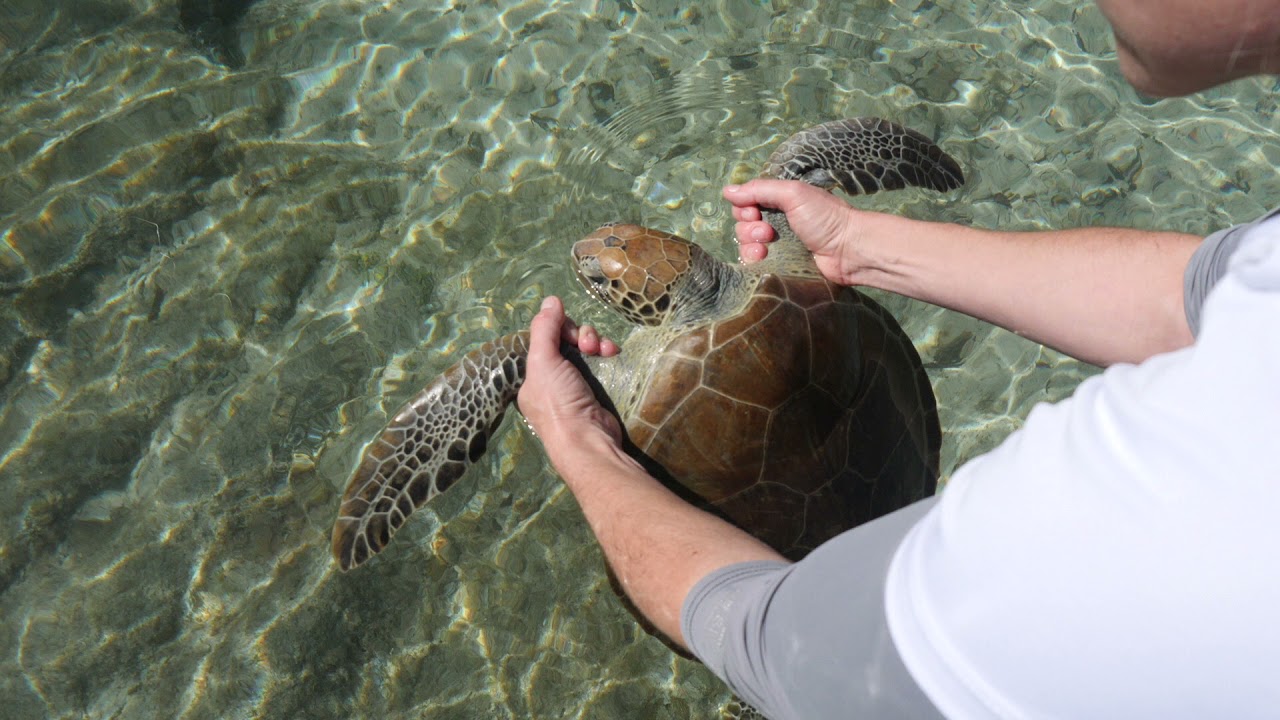Summary:
1. Introduction to the Bermuda Turtle Project and its mission to protect and rehabilitate injured sea turtles.
2. Importance of proper handling and care for injured sea turtles.
3. Step-by-step guide on handling and dealing with injured sea turtles.
4. Overview of the Bermuda Turtle Project’s efforts and success in turtle conservation.
5. Importance of public awareness and involvement in sea turtle conservation.
Bermuda, a captivating island surrounded by turquoise waters and abundant marine life, is home to a remarkable organization known as the Bermuda Turtle Project (BTP). Led by Jennifer Gray, the BTP’s Director and aided by dedicated volunteers like Gaelle Roth, a veterinarian passionate about sea turtle conservation, this project has been instrumental in protecting and rehabilitating injured sea turtles. In this article, we will delve into the unique and fascinating aspects of how these incredible creatures are handled within the azure waters of Bermuda.
Importance of Proper Handling and Care:
Sea turtles, often hailed as the gentle giants of the ocean, face various threats that leave them vulnerable to injuries. Collisions with boat propellers, entanglement in fishing gear, and ingestion of marine debris are just a few examples. PHandlingand caring for injured sea turtles is paramount to their survival and eventual return to the wild.
Step-by-Step Guide to Handling Injured Sea Turtles:
1. Identification and Assessment: The first step in aiding an injured sea turtle is identifying the species and assessing its condition. Each species has unique characteristics, and understanding their specific needs is essential. The next crucial step is assessing the turtle’s health, injuries, and overall vitality.
2. Approaching the Turtle: When approaching an injured sea turtle, it is vital to do so with caution and care. Rapid movements and excessive disturbance may cause distress to the already vulnerable animal. Slow, gentle movements reduce stress and establish a calm environment. Remember, they are majestic creatures deserving of our utmost respect.
3. Restraining the Turtle: Secure the injured turtle is often necessary to prevent further injuries to itself or the handlers. Jennifer Gray and Gaelle Roth demonstrate the proper techniques, ensuring the turtle’s safety and those aiding its recovery. Appropriate restraining methods are essential, such as using soft towels and maintaining a firm but gentle grip.
4. Transporting the Turtle: Once the sea turtle is securely restrained, the next step is to carefully transport it to a suitable rehabilitation facility. Specialized equipment like stretchers and containers designed to limit movement are used to ensure the turtle’s safety during transportation. Maintaining a stable environment is crucial for optimal healing and recovery.
Overview of the Bermuda Turtle Project:
The Bermuda Turtle Project has been at the forefront of sea turtle conservation in Bermuda for over three decades. Their dedicated efforts focus on research, rehabilitation, and education to safeguard these magnificent creatures. The project has meticulously documented over 10,000 individual sea turtles through its tagging program, allowing scientists to gain valuable insights into migration patterns and population dynamics.
The BTP’s rehabilitation facility at the Bermuda Aquarium, Museum and Zoo (BAMZ) provides a haven for injured and sick sea turtles. Under the watchful eyes of skilled veterinarians and passionate staff, injured turtles receive necessary medical attention, rehabilitation, and, eventually, release back into their natural habitat.
Importance of Public Awareness and Involvement:
While the Bermuda Turtle Project is crucial in protecting and rehabilitating injured sea turtles, raising public awareness and involvement remains integral to achieving long-lasting conservation goals. Through educational programs, outreach initiatives, and partnerships with organizations like the Sea Turtle Conservancy, the BTP encourages individuals to become ocean stewards. Everyone can contribute to preserving these irreplaceable creatures by volunteering, reducing marine pollution, or supporting local conservation efforts.
Conclusion:
The remarkable work carried out by the Bermuda Turtle Project, led by Jennifer Gray and aided by dedicated individuals like Gaelle Roth, showcases the power of human compassion and dedication toward safeguarding injured sea turtles. Their step-by-step guide to handling and caring for these majestic creatures highlights the importance of empathy, education, and proper practices in ensuring survival.
As we immerse ourselves in the beauty of Bermuda’s azure waters, let us remember our responsibility to protect and nurture these ancient mariners. Through our collective efforts, we can become guardians of the seas, working together to secure a vibrant future for sea turtles and the incredible marine ecosystems they call home.
For more information on the Bermuda Turtle Project, please visit the Bermuda Zoological Society’s website (https://www.bamz.org), the Bermuda Turtle Project website (https://www.bermudaturtleproject.org), and the Sea Turtle Conservancy website (https://www.conserveturtles.org/).
*****
Source Description
Join Jennifer Gray, Director of the Bermuda Turtle Project (BTP), and Gaelle Roth, BTP volunteer and veterinarian, as they demonstrate how to handle and deal with injured sea turtles in the waters of Bermuda.
For more information, visit:
The Bermuda Zoological Society’s website: https://www.bamz.org
The Bermuda Turtle Project website: https://www.bermudaturtleproject.org
Sea Turtle Conservancy website: https://www.conserveturtles.org/

